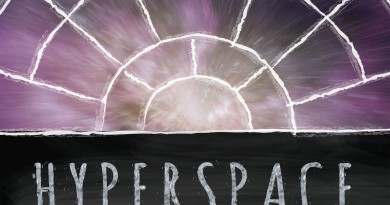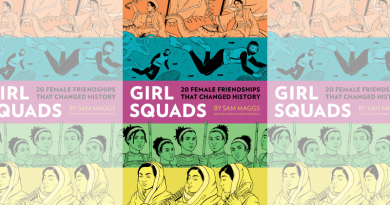Journey to The Force Awakens: Original Trilogy Big Three Adventures
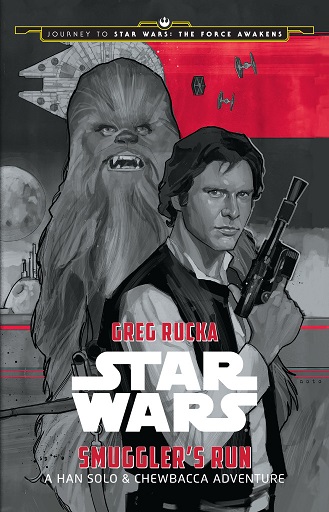 As part of the Force Friday marketing campaign, most of the books in the “Journey to The Force Awakens” publishing program made their debut on September 4. Among the twenty offerings are three new Middle Grade adventures from Disney-Lucasfilm Press. Don’t be misled by the category label, though – these novels have entertaining stories, excellent characterization, great diversity in their casts, and themes that will resonate with all fans excited for The Force Awakens and all the other upcoming Star Wars stories.
As part of the Force Friday marketing campaign, most of the books in the “Journey to The Force Awakens” publishing program made their debut on September 4. Among the twenty offerings are three new Middle Grade adventures from Disney-Lucasfilm Press. Don’t be misled by the category label, though – these novels have entertaining stories, excellent characterization, great diversity in their casts, and themes that will resonate with all fans excited for The Force Awakens and all the other upcoming Star Wars stories.
The trio of books gives Leia, Luke, and Han (with Chewbacca) a chance to shine in their youthful prime prior to their big-screen return almost forty in-universe years after their origin stories took place in A New Hope. Across all three novels, several notable aspects of the stories stand out.
The books fulfill a dual purpose, and carry it off well. First, they introduce the original Big Three to a younger generation of fans. Many readers in the target age cohort are far more familiar with Star Wars on television – Star Wars Rebels and The Clone Wars – than they are with either the OT or PT films. Giving these new-generation fans a chance to see that Han, Luke, and Leia are equally great characters as Ezra and Sabine, Ahsoka and Captain Rex, or Anakin and Obi-Wan will help reinforce why their presence onscreen in The Force Awakens matters to the next generation of heroes in Rey, Finn, and Poe.
Second, the books also reintroduce the OT Big Three to longtime fans. Readers of the Legends tales over the past two decades need to “unlearn what [we] have learned” from the characterizations and experiences told in those stories. Many fans who never got into the Legends, though, often still have their own memories, reactions, and viewpoints on the characters formed from watching and thinking about the OT films for so many years. Both groups of longtime fans can benefit from an approach that shows them how to return to a mindset focused on the core elements of the characters in the OT films, unburdened by the voluminous canon and fanon developed in the intervening decades – just as J.J. Abrams and Lawrence Kasdan did in writing the script for The Force Awakens. In this way, along with the Marvel comic series telling stories with them in the same period on the timeline, these three books remind us who these characters really are, deep down in their core personalities. Even if these insights aren’t plot spoilers for The Force Awakens, as such, they likely provide clues about how the moviemakers and the Story Group view the characters and how they will think and act in the next film.
In addition, artist Phil Noto rendered not only the books’ cover portraits, but also several additional scenes within each novel. Each one is fantastic, providing vivid imagery to complement the story. In particular the last picture of Han and Chewie kicking butt told the entire last fight scene on its own.
While the OT Big Three are the starring characters in the books, they also include several memorable new supporting characters. Based on the action figures revealed in conjunction with Force Friday, it appears at least one of them will make an appearance in The Force Awakens – and perhaps several more are destined to show up elsewhere in the saga, as well. While it’s too early to have any sense of the specifics, readers curious to speculate about the upcoming film will find much to ponder in these three novels.
Finally, these three novels use a very crafty storytelling technique: each book begins and ends with a frame story taking place at the time of The Force Awakens, presenting the adventure in the OT timeframe as a tale being retold after the passage of many years. Like Matthew Stover’s incredible Legends novel Luke Skywalker and the Shadows of Mindor, everything in the story is related by a narrator who is retelling the adventure after the fact. This fits in wonderfully with the idea that Star Wars stories exist “a long time ago in a galaxy far, far away” – they’re fairy tales or communally shared legends like The Iliad or King Arthur or One Thousand and One Nights, told and retold over the generations with each new teller bring a slightly different perspective and emphasis to the underlying story. This technique also deviously bypasses the longstanding fandom fetish with the factoid details of canon, because anything that doesn’t line up with another source is, by the nature of the story itself, simply a function of a certain point of view. 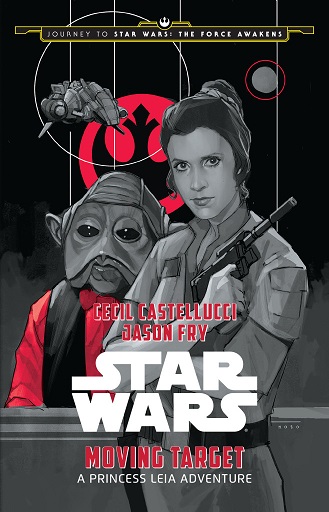 In these books, the OT era adventures aren’t occurring in real time for the characters; like any memories, they might be flawed or inaccurate, or shaded by the point of view of the person telling the tale. In addition, within the frame stories themselves the stories are being told for a specific purpose – Leia narrating her memoirs to inspire the soldiers of the Resistance, Han running a con on unsuspecting mercenaries, Threepio regaling a young pilot who idolizes Luke – which itself might necessitate a particular spin on the decades-old story in service of the contemporary objective of the storyteller.
In these books, the OT era adventures aren’t occurring in real time for the characters; like any memories, they might be flawed or inaccurate, or shaded by the point of view of the person telling the tale. In addition, within the frame stories themselves the stories are being told for a specific purpose – Leia narrating her memoirs to inspire the soldiers of the Resistance, Han running a con on unsuspecting mercenaries, Threepio regaling a young pilot who idolizes Luke – which itself might necessitate a particular spin on the decades-old story in service of the contemporary objective of the storyteller.
*** minor SPOILERS below ***
Moving Target: A Princess Leia Adventure, by Cecil Castelluci and Jason Fry
Like her mother Padmé, Leia values her commitment to her duty very highly, yet sometimes cannot deny that the bonds of love and friendship are equally powerful – and equally important. This aspect of her character forms the core of Moving Target. In the frame story, Leia considers that many of the young Resistance fighters under her command, including the pilot Poe Dameron, need to learn and understand this lesson. In remembering Operation Yellow Moon in the days shortly before the Rebel fleet began massing at Sullust in preparation for the attack at Endor, Leia recalls a formative experience that helped her realize the importance of balancing love and duty even during the most trying times. Notably her mission team includes two women and two men, plus Nien Nunb as pilot, and Leia is the only human.
One of the standout scenes in Moving Target is Chapter Seven, which features a lengthy discussion between Leia and Mon Mothma. While Han comes up briefly, the heart of their conversation is about why they fight. Mothma emphasizes to Leia that it is not only the political goal of overthrowing the Empire; the Emperor’s tyranny also ruins individual lives, in countless ways every day. If the rebels never share friendships, laugh or love, then evil has succeeded, no matter the outcome of the war.
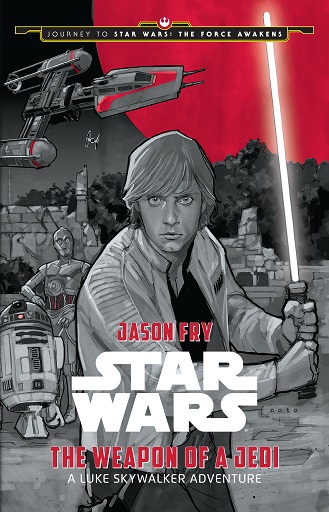 Perhaps the biggest theme of the book, though, is the burden Leia carries because so many people die for her and her cause. From the destruction of Alderaan and the deaths of Rebellion fighters in general to the specific individuals who sometimes sacrifice their lives to assist Leia’s escape from Imperial clutches or the success of her missions, she feels a profound obligation to ensure they did not die in vain. This is, without a doubt, an emotionally heavy theme for a middle grade book, but Moving Target conveys the message without becoming grim or overwrought in the storytelling.
Perhaps the biggest theme of the book, though, is the burden Leia carries because so many people die for her and her cause. From the destruction of Alderaan and the deaths of Rebellion fighters in general to the specific individuals who sometimes sacrifice their lives to assist Leia’s escape from Imperial clutches or the success of her missions, she feels a profound obligation to ensure they did not die in vain. This is, without a doubt, an emotionally heavy theme for a middle grade book, but Moving Target conveys the message without becoming grim or overwrought in the storytelling.
The Weapon of a Jedi: A Luke Skywalker Adventure, by Jason Fry
While Leia faces the burden of her duty to the Rebellion, Luke struggles with the burden of his destiny as the last of the Jedi. He received a few lessons from Obi-Wan between the torched Lars Homestead and the Death Star, but only enough to scratch the surface of understanding the Force or Jedi teachings. He feels alone and lost, unsure how to even begin to learn more. At the same time, his innate goodness provides a subconscious a lodestar for his actions. He tries his best to make sure his presence doesn’t make life worse for the innocent bystanders in the Galactic Civil War that he encounters. He is eager to help people, and keeps his word when he gives it. He values his friends and draws on their inspiration to hold onto hope. Though Luke may feel adrift in figuring out how to become a Jedi, he doesn’t have any trouble making the right choices in being a good person.
Importantly, The Weapon of a Jedi shows Luke making mistakes, misunderstanding the guidance he is receiving, and not always deducing the correct lesson the first time. This is wisdom everyone can benefit from.
The book also reinforces themes about the Jedi and the Empire from Star Wars Rebels. On the one hand, decades of Imperial propaganda takes its toll on the reputation of the Jedi, particularly with young people. Yet many people still live who remember the Old Republic and the Clone Wars, and not all of them buy into the new regime’s version of history. On the other hand, despite the Emperor’s best efforts, all traces of the Jedi haven’t been erased from the galaxy. The Order had many outpost temples in the galaxy, and even ones that are superficially destroyed or long forgotten can still contain knowledge useful to those who want to relearn the ancient teachings. The Weapon of a Jedi helps to show how, even without a living Master to train him except for brief periods with Obi-Wan and Yoda, Luke nevertheless will have the opportunity to learn about the Force and becoming a Jedi.
Finally, the book is worth reading for its hilariously successful portrayal of Artoo and Threepio as companions on Luke’s adventure. It’s hard to think of any other book that plays the dynamic between these three characters so well.
Smuggler’s Run: A Han Solo & Chewbacca Adventure, by Greg Rucka
Han Solo might try to tell you that his only duty is to himself, or perhaps the trio of himself, Chewie, and the Falcon. Certainly, he’d insist, he’s not in the Rebellion for their political cause; he’s only interested in the reward money the Alliance offers for successful missions. Most of the time, though, it seems like Han is trying to convince himself more than anyone else. And he’s not doing a very good job of it.
In Smuggler’s Run we once again see a Han Solo who can’t say no to his friends and who can’t stop himself from doing the right thing even if he has to risk his own neck in the process. He and Chewie undertake a mission to retrieve a fleeing Rebel operative because Leia needs them to and no one else can pull it off in time. He calls in a favor from an old friend, which only ends up getting her mixed up in the madness he’s brought with him. All the while, Han and Chewie are being chased by bounty hunters pursuing Jabba’s payday and Imperials bent on capturing the Rebel spy. Han may be able to count on his friends, but he also has a lot of enemies. If the frame story is any indication, he still has a fair share of both forty years later.
Like Leia’s pursuer in Moving Target, it’s a ruthless and vindictive female Imperial officer who’s chasing Han in Smuggler’s Run. His underworld friend is also a woman, while the Rebel in distress they’re rescuing is a man. It’s a fun twist on classic story tropes, and Rucka makes it feel effortless in the story. Really, though, the heart of the story is Han’s talent for turning what ought to be a relatively straightforward extraction into a madcap, seat-of-his-pants snatching of escape from the jaws of capture or death. And that is a Han Solo everyone should be looking forward to seeing on the big screen again in December.
B.J. Priester is editor of FANgirl Blog and contributes reviews and posts on a range of topics. A longtime Star Wars fandom collaborator with Tricia, he edited her novel Wynde and is collaborating with her on several future projects set in that original universe. He is a law professor in Florida and a proud geek dad.









